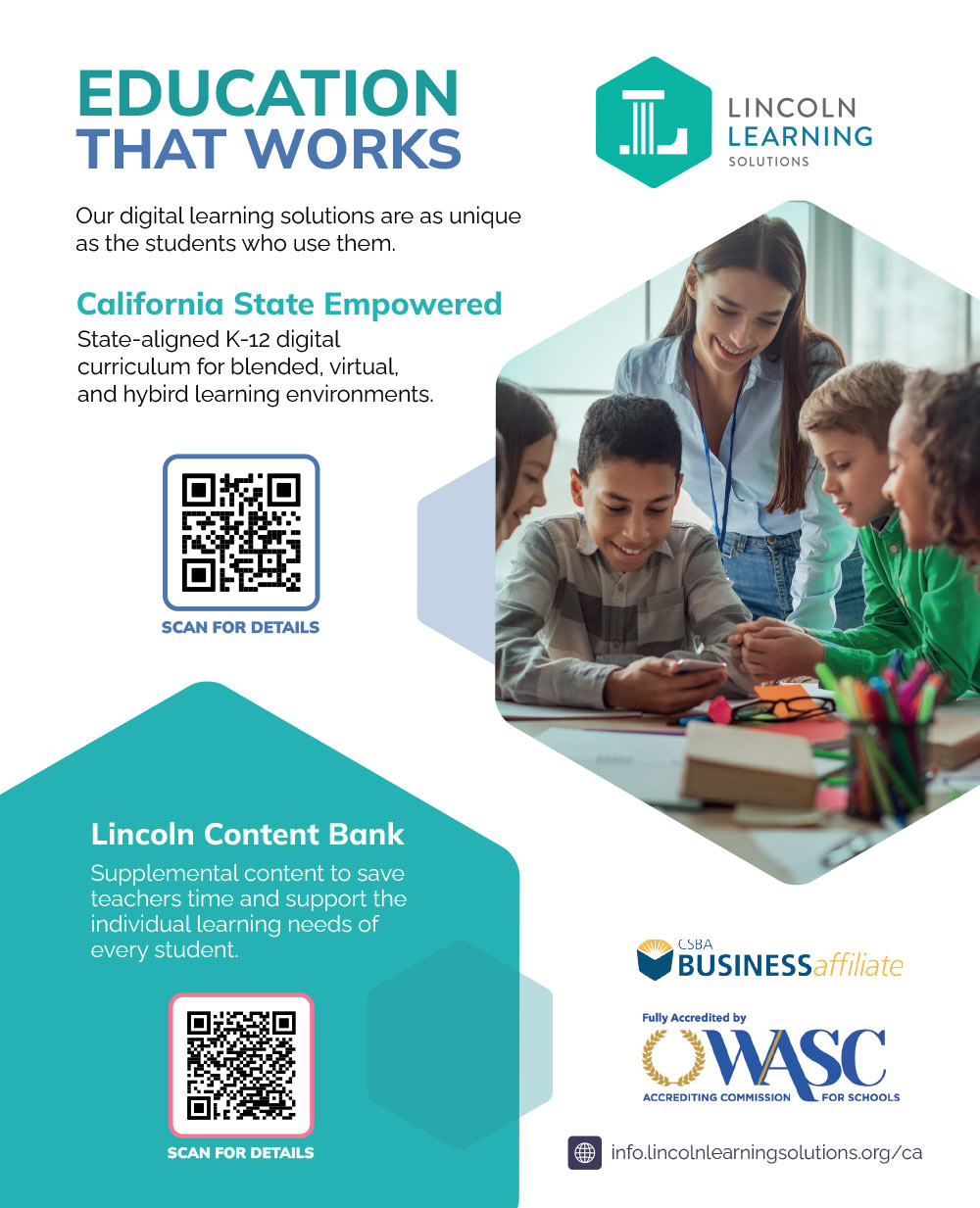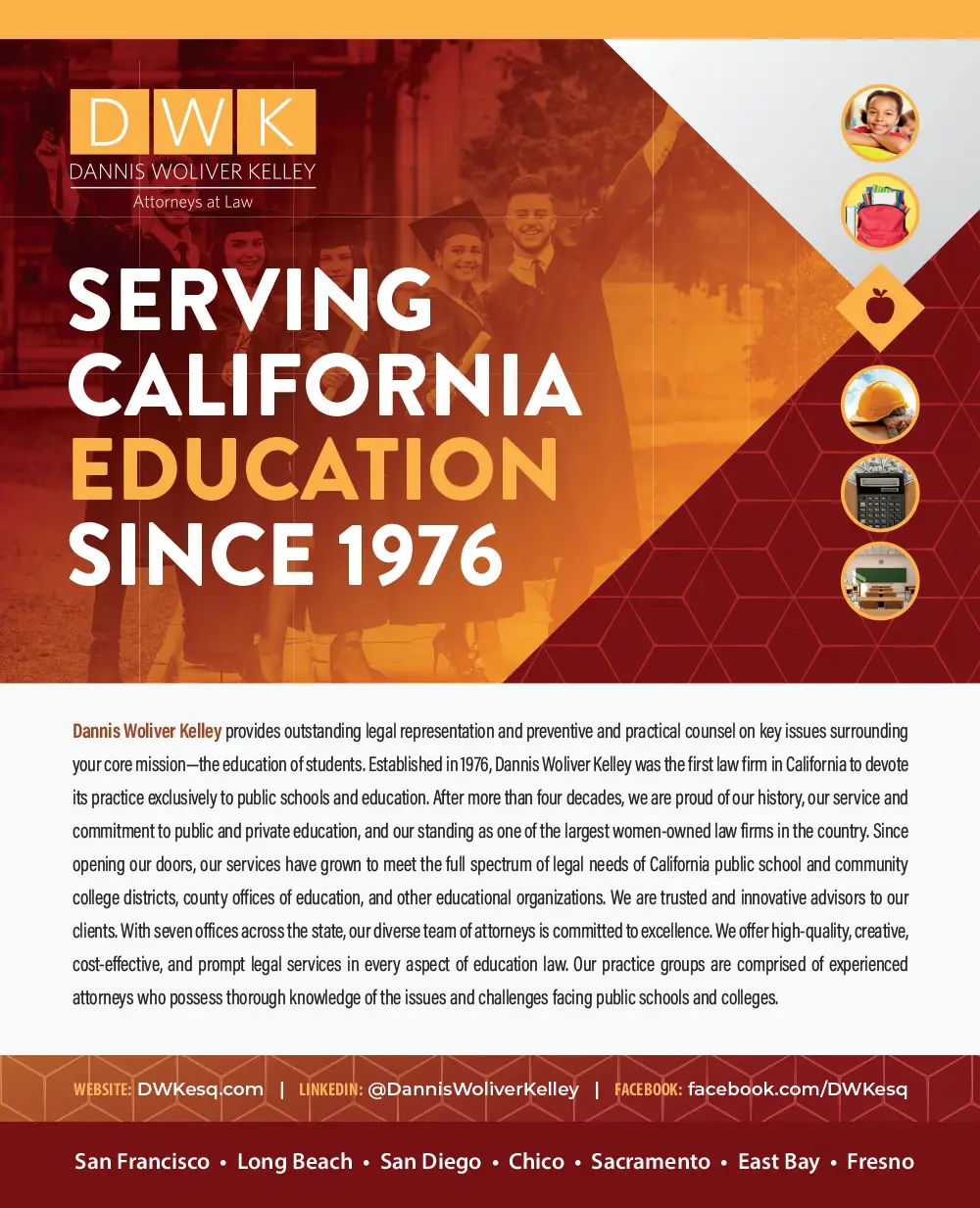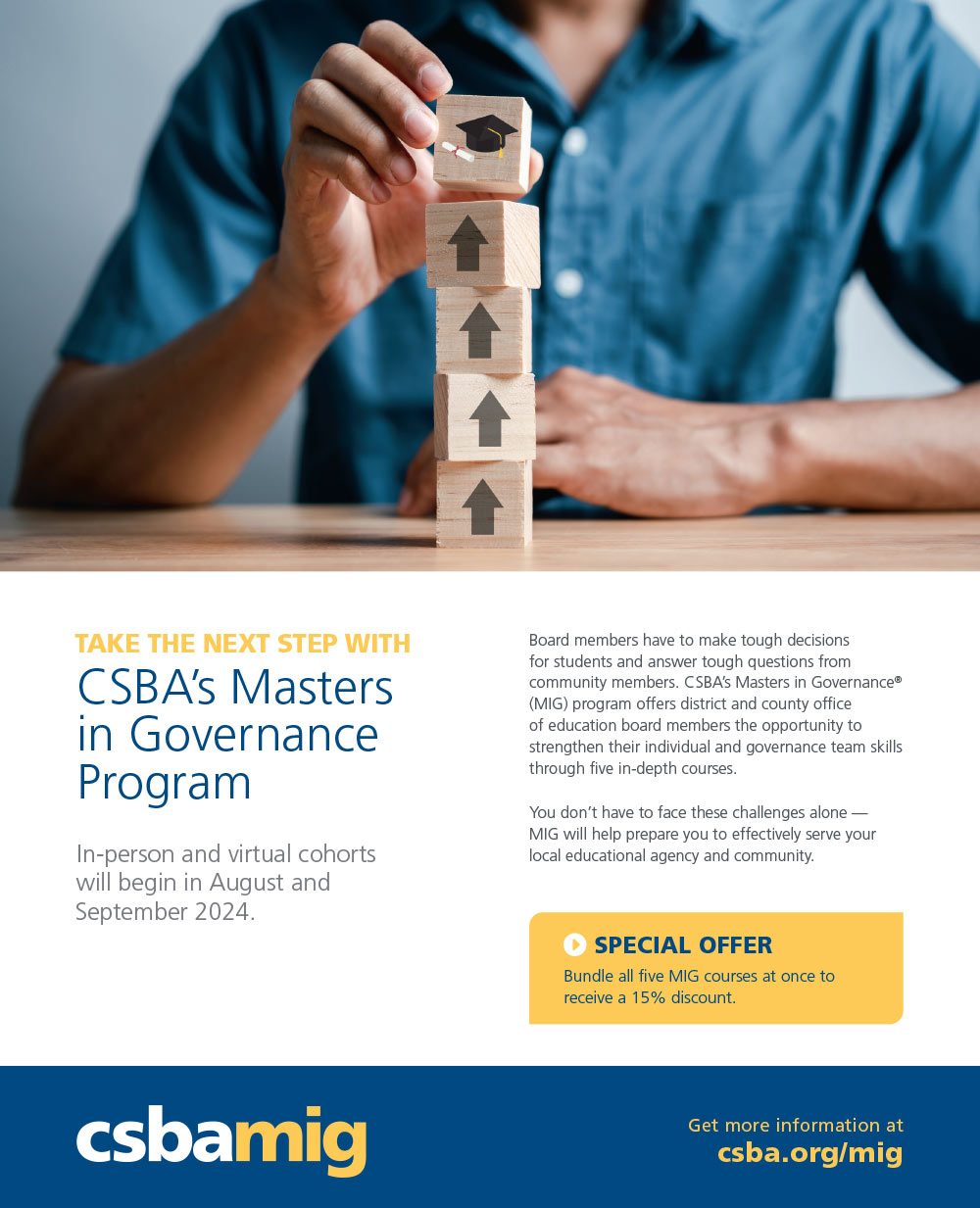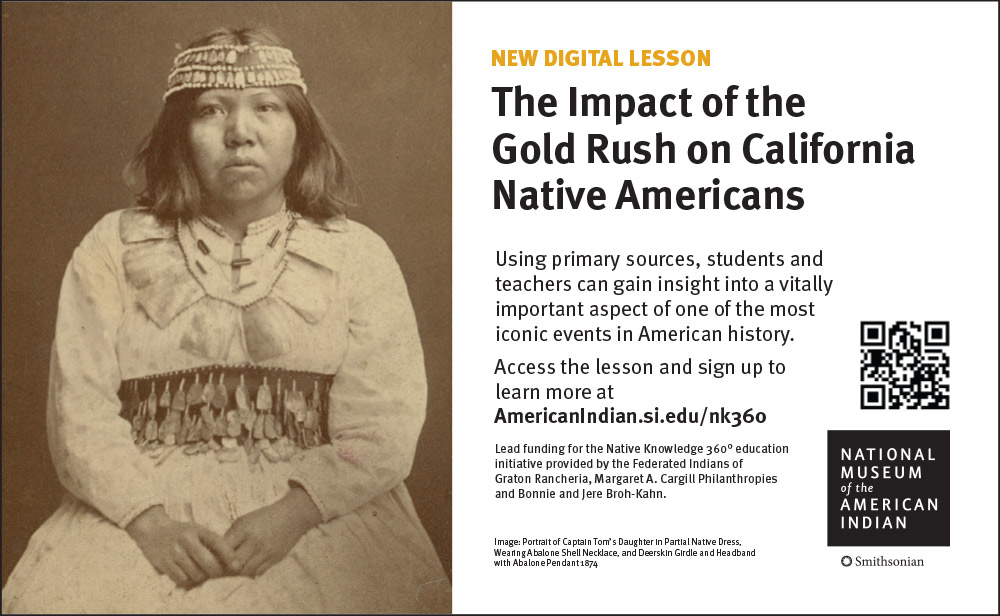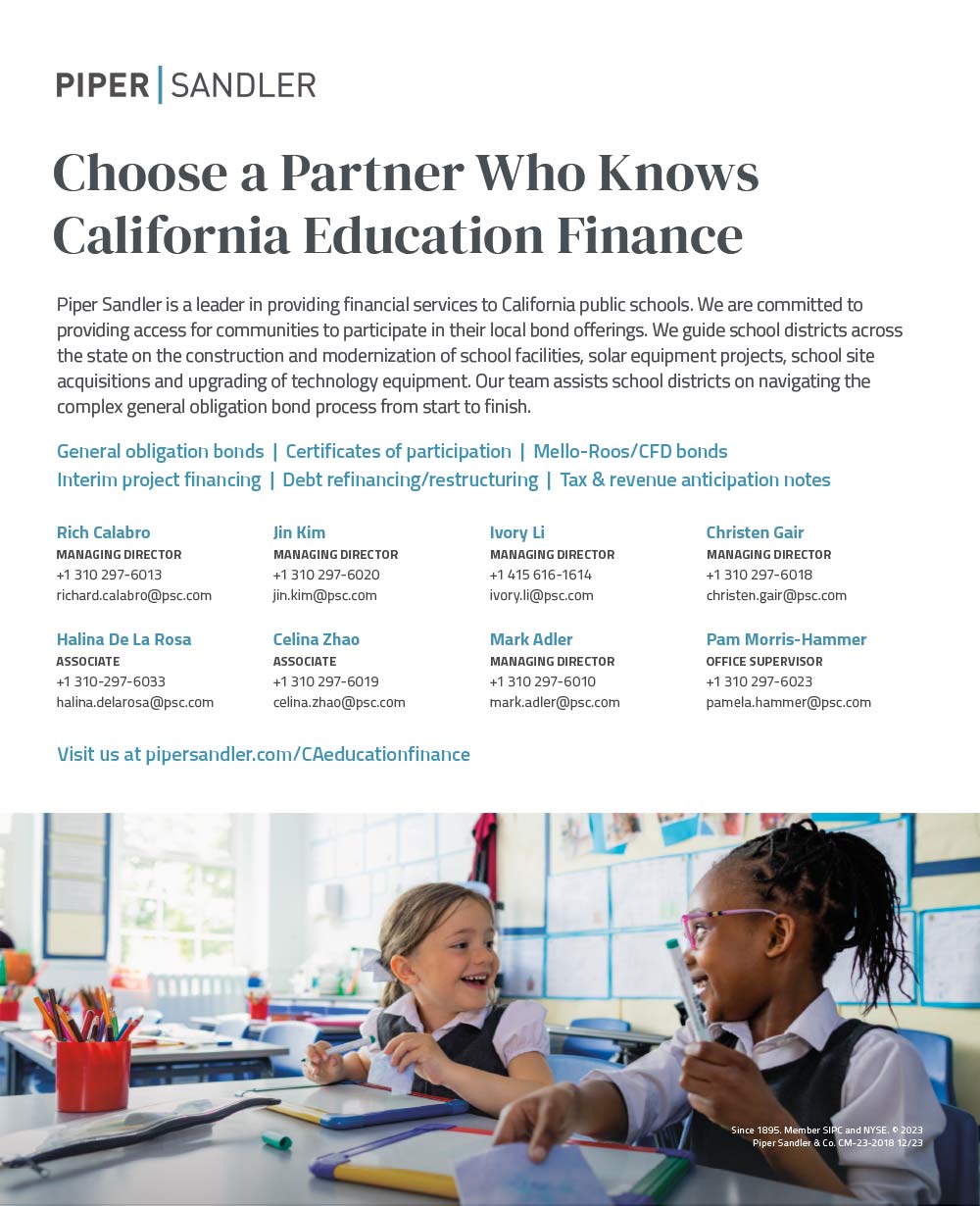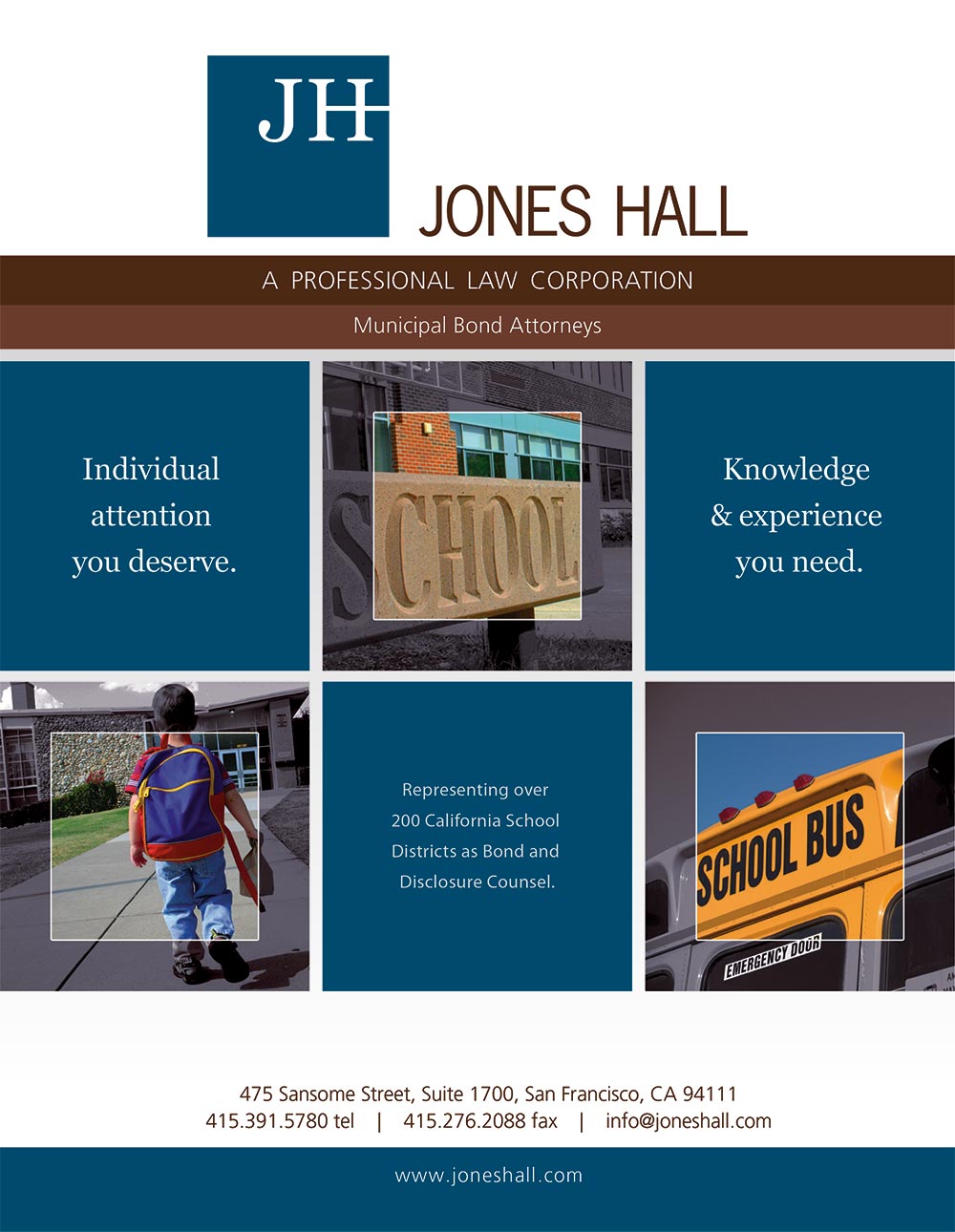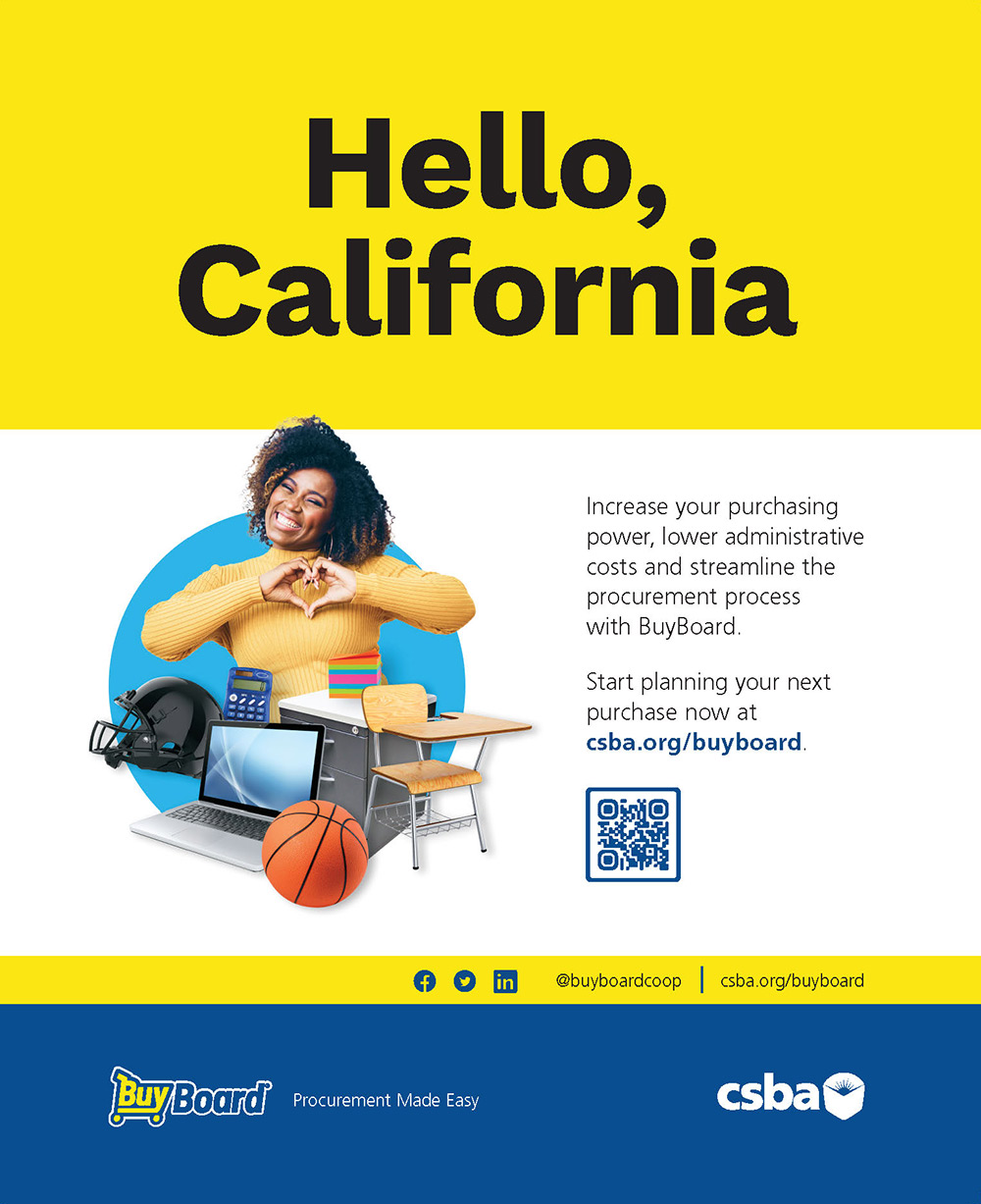
Summer 2024
The California School Boards Association is the essential voice for public education. We inspire our members to be knowledgeable leaders, extraordinary governance practitioners and ardent advocates for all students.
Local educational agencies ready for fiscal realities as pandemic relief expires
by Heather Kemp
Lessons learned from schools that have implemented smartphone restrictions
by Alisha Kirby
Autumn Boylan, deputy director, Office of Strategic Partnerships, California Department of Health Care Services
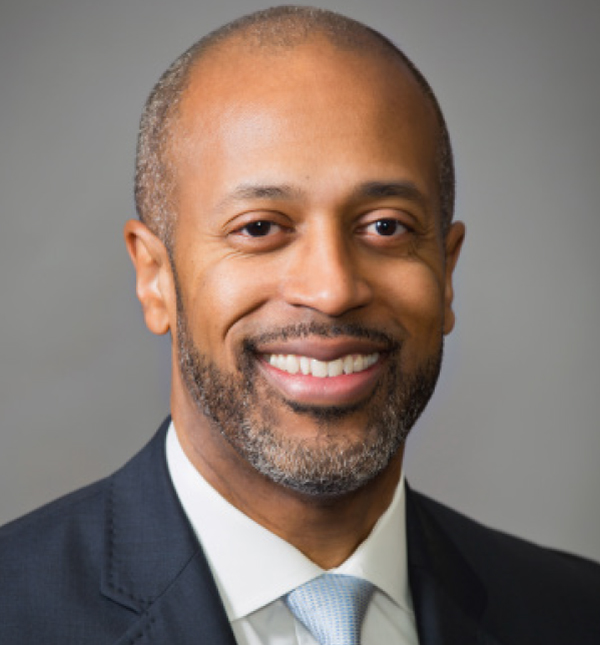
CEO’s note
by Vernon M. Billy
Practicality and principle
n his final presidential address, Abraham Lincoln told the nation, “Important principles may and must be inflexible.” As a man who had recently led America through the most searing conflict in its history, Lincoln knew that maintaining core values requires constant vigilance. He also realized that the occasional lapse, the seemingly innocuous exception, can devolve into a habit that deprives a man, a community or a country of its integrity.

CSBA 2024 Board of Directors
- Tyler Nelson
Region 1, Ukiah USD - Bruce Ross
Region 2, Redding ESD - David T. Gracia
Region 3, Napa Valley USD - Renee Nash
Region 4, Eureka Union SD - Alisa MacAvoy
Region 5, Redwood City ESD - Jackie Wong
Region 6, Washington USD - Rachel Hurd
Region 7, San Ramon Valley USD - Christopher “Kit” Oase
Region 8, Ripon USD - Roger Snyder
Region 9, Scotts Valley USD - Kathy Spate
Region 10, Caruthers USD - Sabrena Rodriguez
Region 11, Ventura USD - William Farris
Region 12, Sierra Sands USD - John McPherson
Region 14, Monterey COE - Susan Henry
Region 15, Huntington Beach Union HSD - Karen Gray
Region 16, Silver Valley USD - Eleanor Evans
Region 17, Oceanside USD - Bruce Dennis
Region 18, Riverside COE - Devon Conley
Region 20, Mountain View Whisman SD - Tanya Ortiz Franklin
Region 21, Los Angeles USD - Nancy Smith
Region 22, Palmdale SD - Helen Hall
Region 23, Walnut Valley USD - Jan Baird
Region 24, South Whittier ESD - Chris Clark
Director-at-Large African American, Folsom-Cordova USD - Christina Cameron-Otero
Director-at-Large American Indian, Needles USD - Sylvia Leong
Director-at-Large Asian/Pacific Islander, Cupertino Union SD - Michael Teasdale
Director-at-Large County, Ventura COE - Joaquín Rivera
Director-at-Large Hispanic, Alameda COE
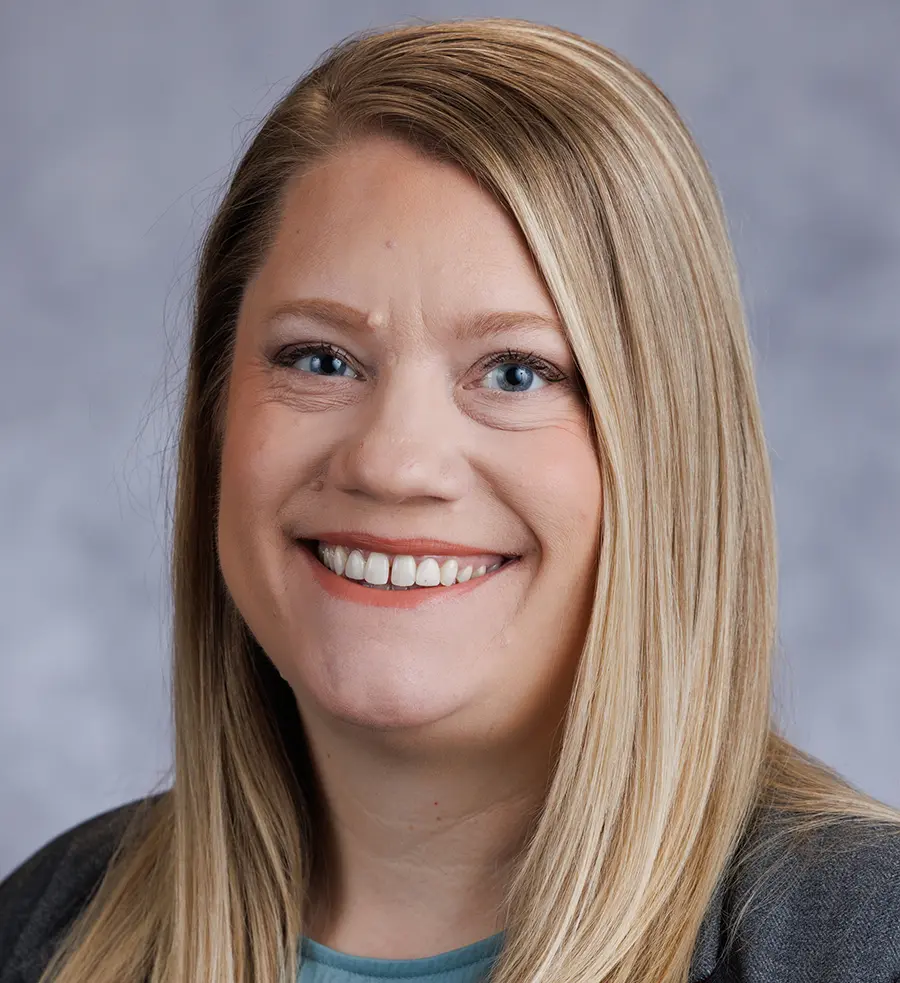
legal insights
by Kristin Lindgren-Bruzzone
Board members and incompatible offices
hile many school board members find that their responsibilities in that elected office are more than enough to keep them busy, some seek to hold additional elected or appointed public offices.

The doctrine of incompatible offices was originally established under “common law” — law created by courts via written judicial opinions — that dates back to the 1920s in California. In 1925, the Second District Court of Appeal ruled that there was incompatibility between the offices of “justice of the peace” and “police judge” in People ex rel. Goodell v. Garrett (1925) 72 Cal.App. 452. Since then, California courts and the Attorney General Rob Bonta have opined on this doctrine numerous times, culminating in the Legislature codifying the principles in Government Code section 1099 in 2005. The principles of incompatible offices have largely remained the same since the Goodell case.

Troy Flint, tflint@csba.org
Editorial Director
Kimberly Sellery, ksellery@csba.org
Staff Writers
Heather Kemp, hkemp@csba.org
Alisha Kirby, akirby@csba.org
Director of Graphic Design and Branding
Kerry Macklin, kmacklin@csba.org
Director of Marketing and Communications
Monica Griffis, mgriffis@csba.org
Senior Graphic Designer
Amanda Moen, amoen@csba.org
Circulation and Advertising
csba@csba.org
Albert Gonzalez, Santa Clara USD
President-elect
Bettye Lusk, Monterey Peninsula USD
Vice President
Debra Schade, Solana Beach SD
Immediate Past President
Susan Markarian, Pacific Union ESD
CEO & Executive Director
Vernon M. Billy
Articles submitted to California Schools are edited for style, content and space prior to publication. Views expressed are those of the authors and do not necessarily represent CSBA policies or positions. Articles may not be reproduced without written permission of the publisher. Endorsement by CSBA of products and services advertised in California Schools is not implied or expressed.

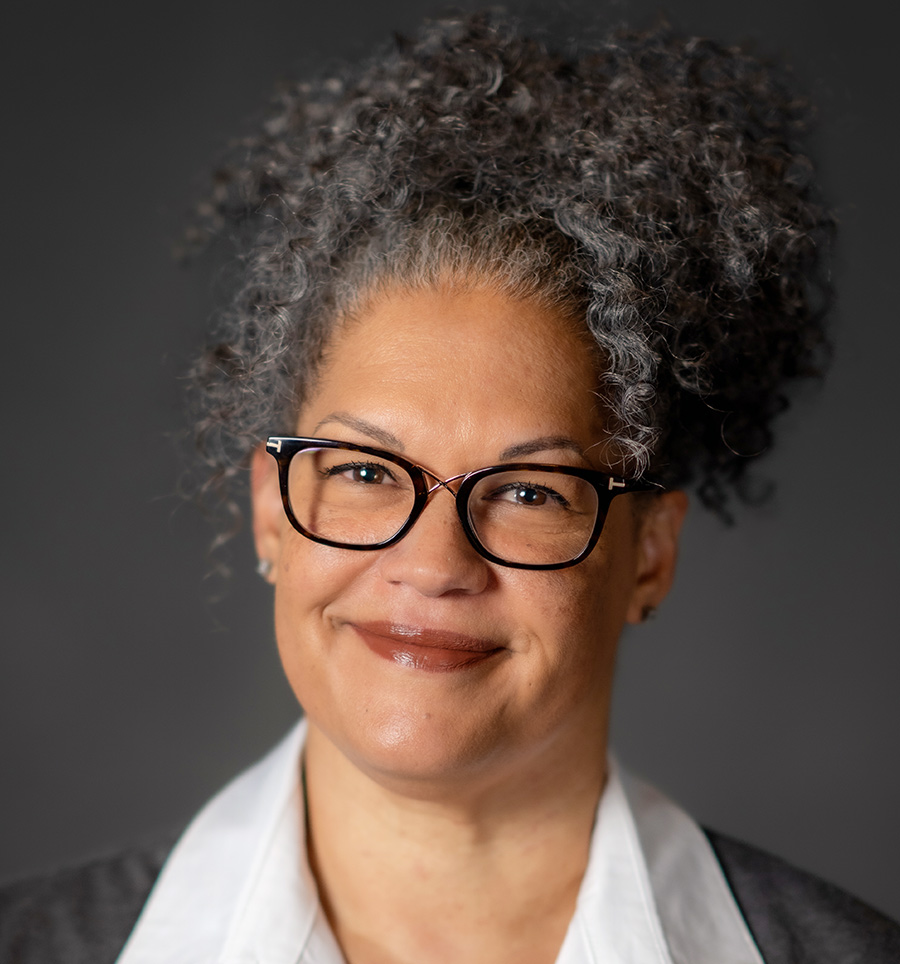
By naomi eason
CSBA advisory group focuses on the needs of small districts
n California, more than half of school board members serve in school districts with an average daily attendance (ADA) of 2,500 or fewer students. These small school districts face a range of challenges and opportunities related to their size. To ensure CSBA understands and addresses the needs of small school districts, the association convenes the Small School District Advisory Workgroup.
class act Best practices in action
class act
Best practices in action

class act
Best practices in action

Making outdoor classrooms in the Mojave
Morongo USD project proves beneficial for student attendance, success
Launched in 2020 as part of a comprehensive plan to increase student engagement and achievement, the Outdoor Classroom Project at Yucca Valley Elementary School (YVES) has led to the development of three garden areas, outdoor seating for various classrooms, a designated reading spot and the installation of high-quality equipment that transitional kindergarten and kindergarten students use for “creative play.”
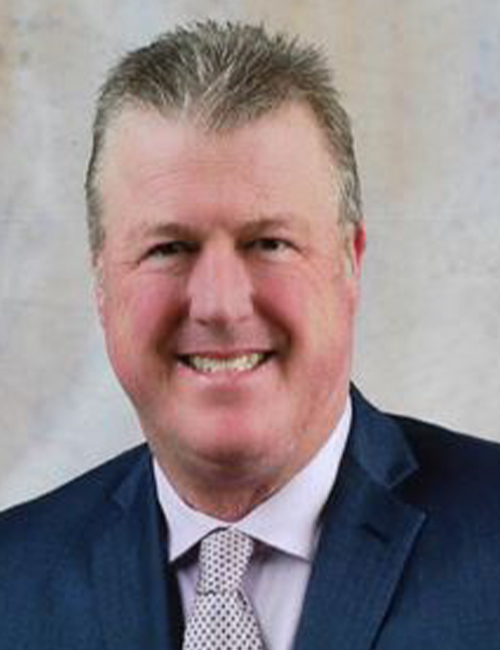
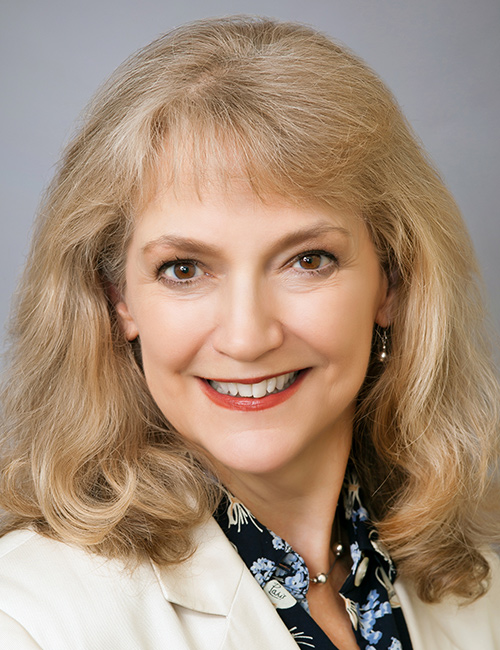

BoardWise
Shifting mindsets
The benefits of well-structured CTE pathways
n the dynamic landscape of education, where the journey from classroom to career is increasingly intertwined, career technical education (CTE) pathways are beacons of experiential learning.

They offer students a curriculum and a roadmap to navigate the complexities of modern-day industries. For governance team members, understanding and supporting the significance of well-structured CTE pathways is paramount in shaping the educational landscape of tomorrow.
In recent years, California has witnessed a significant investment, exceeding $3 billion, in bolstering CTE programs across its high schools. This is not just a financial commitment; it’s an investment in our students’ future and our communities’ prosperity. As enrollment in CTE pathways continues to climb, it underscores the growing recognition of its importance in preparing students for the diverse careers awaiting them.
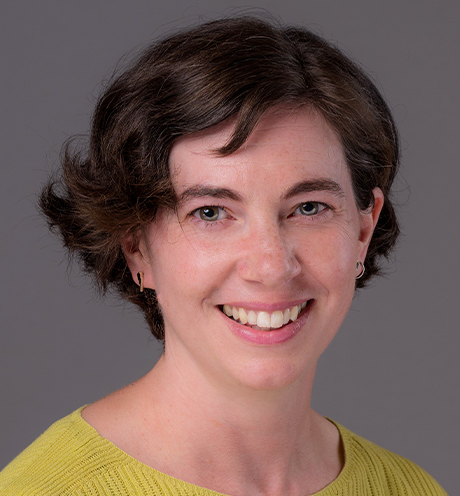
csba at issue
Telehealth network offers new hope for rural students
hen Lori Gonzalez began her superintendency at the Lamont Elementary School District (LESD) in 2022, she found a rural, low-income community where absenteeism had become a significant problem.

“I knew what these families were going through,” Gonzalez said. “I remember growing up as an immigrant child, and you either went to work anyway, or you waited until you were really sick. My parents worked in the fields, and they couldn’t afford to miss work to take us to the doctor.”

Compton Unified School District
n June 6, the Compton Unified School District (CUSD) celebrated a significant milestone at the Long Beach Terrace Theater, when 915 graduating seniors from its four high schools proudly received their diplomas.


by Heather Kemp
Local educational agencies ready for fiscal realities as pandemic relief expires

The beginning of the 2024–25 academic year coincides with the end of an era for local educational agencies across the U.S.


Building a high-functioning governance team
Research has found that leadership stability contributes to the success of an organization, while superintendent turnover creates “academic instability and organizational dysfunction,” according to a report by AASA, the School Superintendent Association. The report also cites research that superintendent turnover creates frustration in school districts due to ever-shifting priorities among school leaders, resulting in improvement efforts that are often not sustained.
bans
By Alisha Kirby
here’s no denying the value of smartphones. Many people pay their bills, keep up with the news, connect with family and friends and perform other daily tasks on the devices. However, as schools try to re-engage students and address increasingly poor behavior in the classroom after the disruption caused by pandemic closures, many districts are re-examining whether to adjust policies further limiting students’ use of cellphones on campuses.
In 2009, 90 percent of U.S. schools had established some kind of cellphone-use ban, compared to about 67 percent in 2015. By 2020, the percentage of schools with such policies rebounded to nearly 77 percent, according to data released in 2023 by the National Center for Education Statistics.
bans
By Alisha Kirby
here’s no denying the value of smartphones. Many people pay their bills, keep up with the news, connect with family and friends and perform other daily tasks on the devices. However, as schools try to re-engage students and address increasingly poor behavior in the classroom after the disruption caused by pandemic closures, many districts are re-examining whether to adjust policies further limiting students’ use of cellphones on campuses.
In 2009, 90 percent of U.S. schools had established some kind of cellphone-use ban, compared to about 67 percent in 2015. By 2020, the percentage of schools with such policies rebounded to nearly 77 percent, according to data released in 2023 by the National Center for Education Statistics.

Advertorial

A new digital lesson from the Smithsonian’s National Museum of the American Indian, “The Impact of the Gold Rush on Native Americans of California: A Source Investigation,” offers insights into a little-known but vitally important aspect of one of the most iconic events in American history—the California gold rush. The inclusion of this content adds a long-omitted piece of American history to the traditionally taught gold rush narrative and provides an opportunity for the acknowledgement of the atrocities committed against California’s Native peoples during this era. The lesson is now available online.
a conversation with…
Autumn Boylan
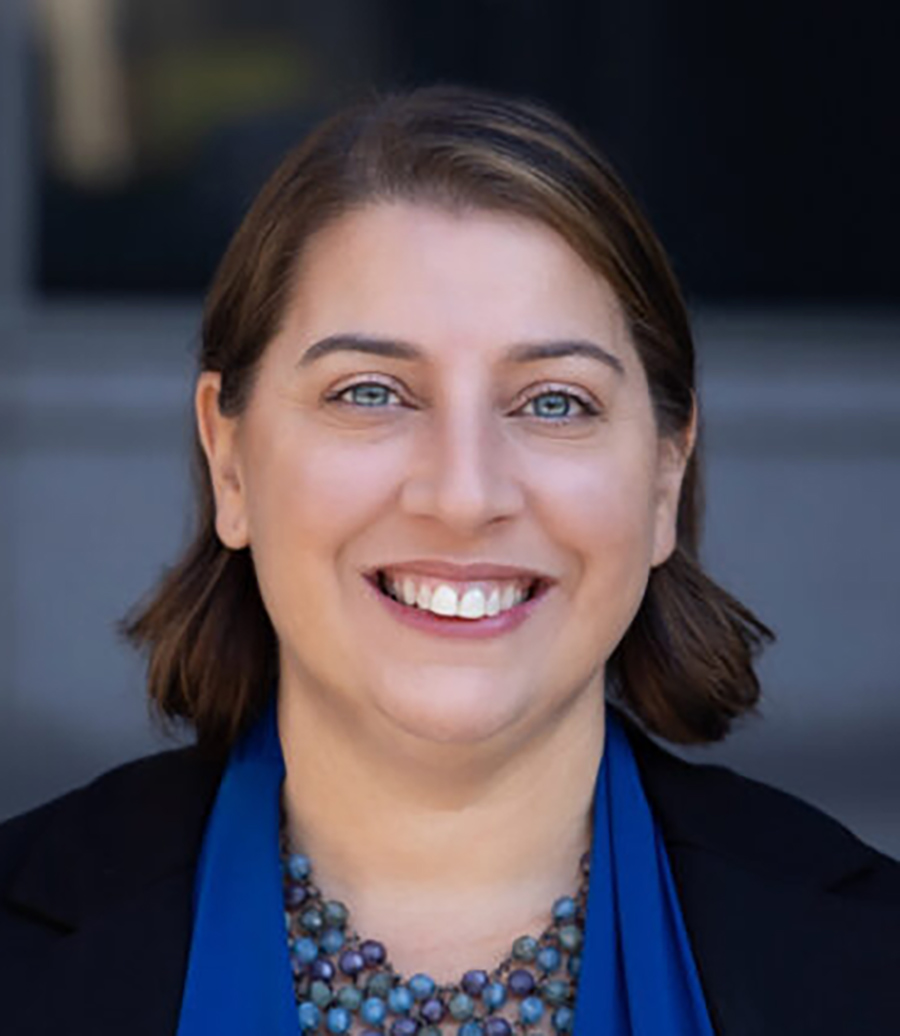
a conversation with…


ad index
- Allovue28
- Atkinson, Andelson, Loya, Ruud & Romo21
- Burke, Williams & Sorensen44
- BuyBoard46
- Climatec31
- CSBA Annual Education Conference and Trade Show17
- CSBA Education Legal Alliance11
- CSBA Education Workforce Housing20
- CSBA GAMUT12
- CSBA Legal ServicesIC
- CSBA Masters in Governance4
- CSBA Safe Schools Toolkit29
- Dale Scott38
- Dannis Woliver Kelley2
- Engie35
- Fagen Friedman & FulfrostIBC
- Jones Hall43
- Keenan & Associates14
- Lincoln Learning Center1
- Lozano SmithBC
- NGS37
- Northern California Carpenters Regional Council25
- Parker & Covert24
- PARS30
- Piper Sandler22
- SELF36
- Smithsonian16
- Southwest Mountain States Regional Carpenters18
- Woodcraft Rangers39

Thanks for reading our Summer 2024 issue!



